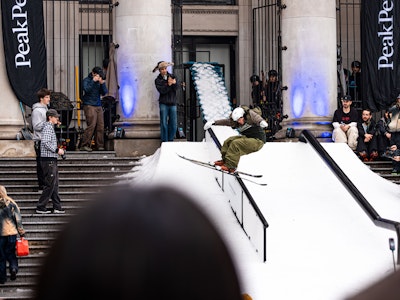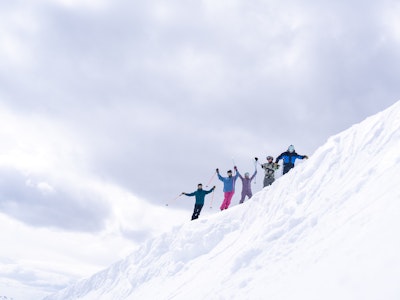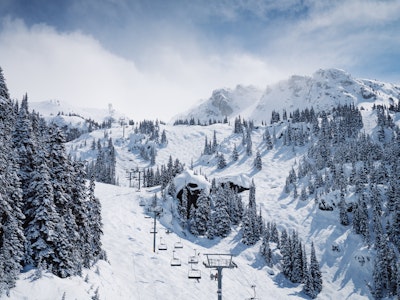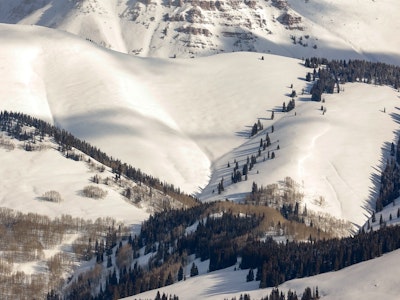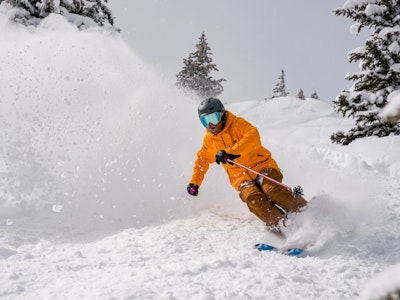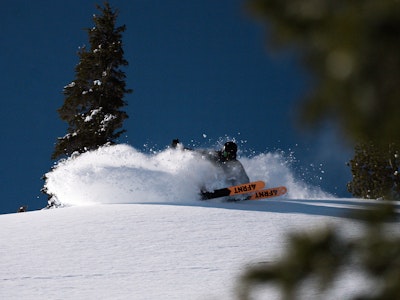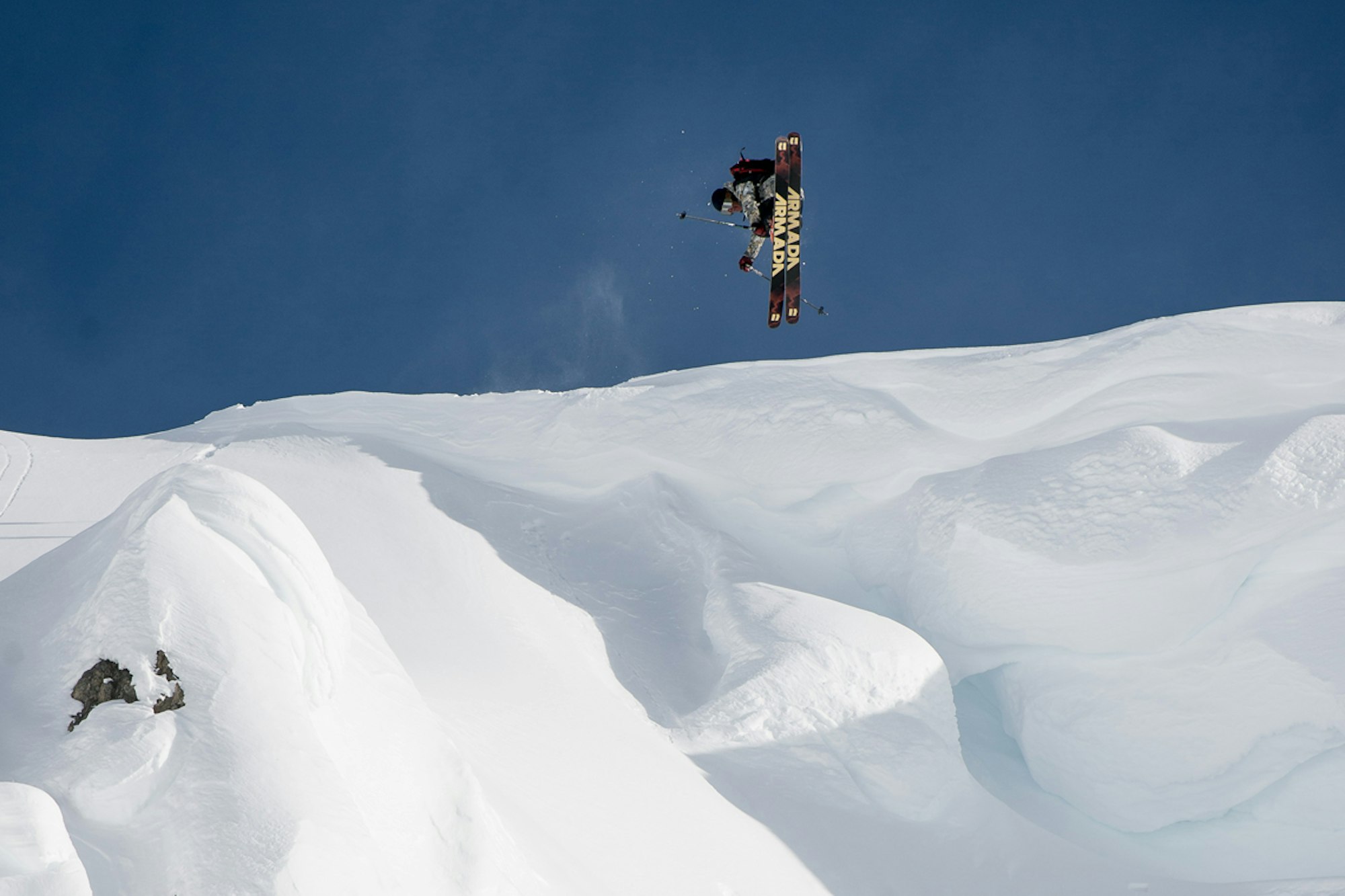

WORDS • COLIN LEVITCH | FEATURED IMAGE • BLAKE JORGENSON
Anna Segal spent a decade atop the women’s slopestyle circuit, culminating in an appearance at the 2014 Sochi Winter Olympics where she just missed the podium, taking home fourth place.
In the lead-up to slopestyle skiing’s Olympic debut, the sport took on an ultra-competitive edge as countries dedicated more money to freeskiing and skiers vied for coveted Olympic roster spots. Segal was right in the thick of the qualification madness. But, in the lead-up to the big show, the Aussie suffered two major knee injuries, tearing her ACL and chipping a sizable chunk of cartilage out of her left knee. Upon recovery, she discovered the field of competition had taken a huge step forward in her absence.
“I found myself coming into the 2013-14 winter and I hadn’t skied, I hadn’t competed and I was feeling really rusty,” says Segal. “Things had ramped up a lot in terms of competitiveness, seriousness, structure and rigidity; everyone had a coach and was traveling with their national team. I think it all hit me at once that the sport had really changed from when I first started.”
She finished fourth in Sochi, a result Segal was happy with. The three-time Winter X Games medalist also acknowledged that Sochi was the end of the line for her as a competition athlete.
“That part of my life was gone,” she says. “I’d competed in slopestyle for ten years, it was time to move on.”
After the Olympics, Segal, 32, picked up her life in Colorado and moved to Whistler, British Columbia, to reinvent herself as a backcountry-oriented skier; someone focused on taking skills acquired during a decade of competing and merging them with new capabilities learned in the backcountry.
It’s taken a few years to build her navigational and safety skills in the mountains, but Segal has found success in her transition. In 2018, she released a two-year film project called Finding the Line with her pro skier sister Nat, and had an inaugural appearance in Warren Miller Entertainment’s latest film, Faces of Winter. But Segal is not the first rider to make the swap from park contests to backcountry skiing in front of the camera. A laundry list of former slopestyle, big air and pipe athletes—their sights set on pillow fields, big-mountain lines and deep wilderness skiing—have made this same transition.
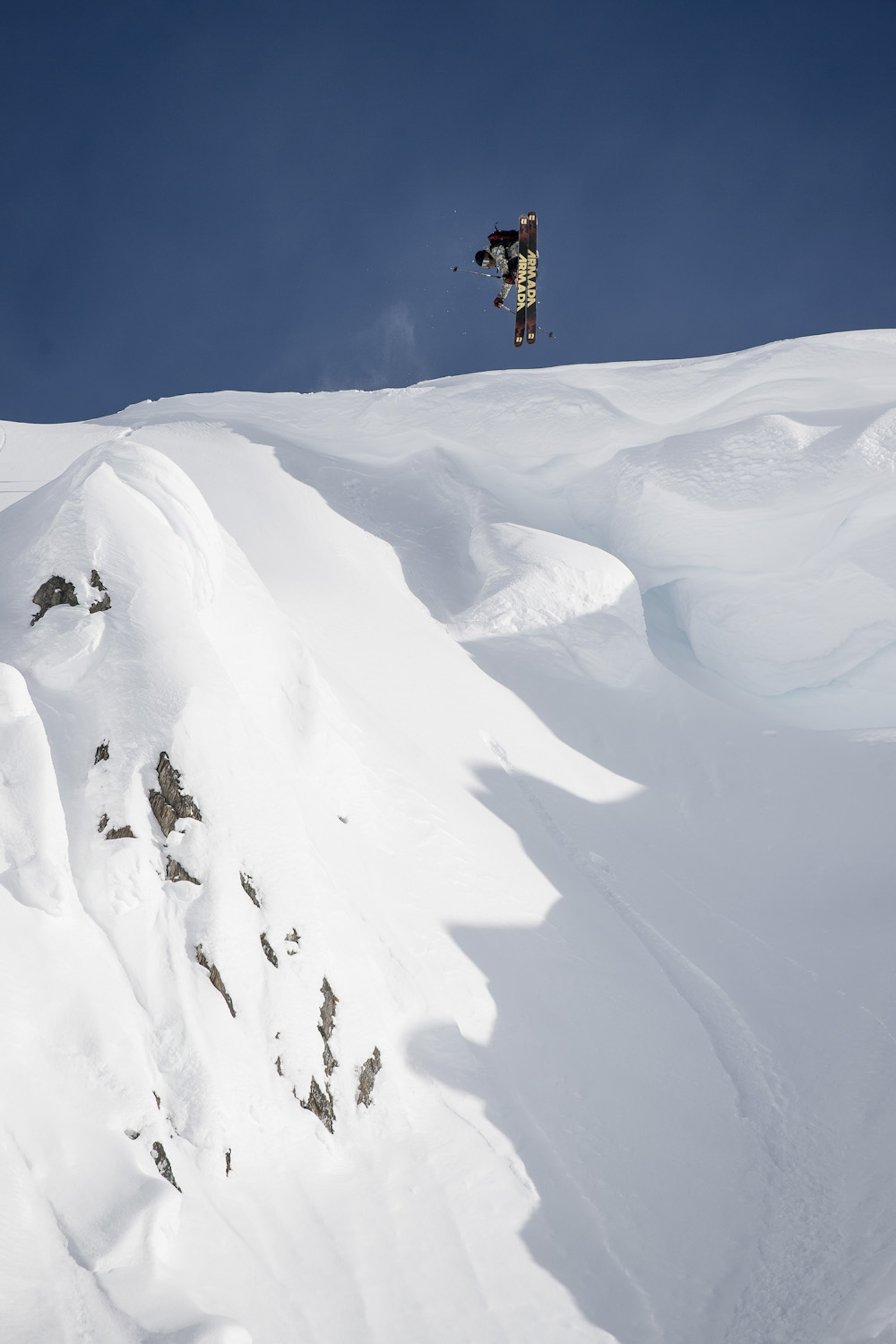
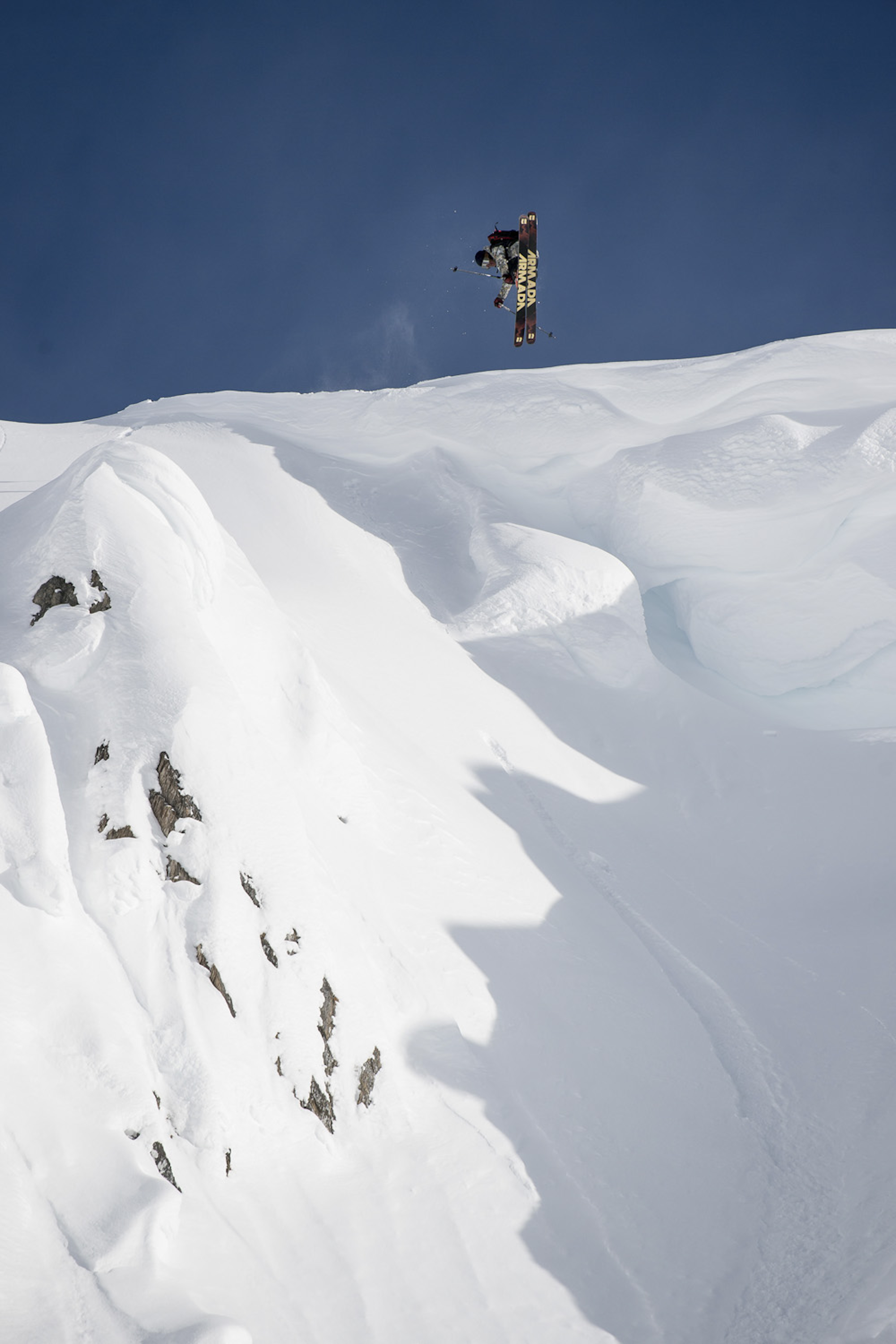
SKIER: Sammy Carlson | PHOTO: Blake Jorgenson | LOCATION: Mica Heli, BC
Twenty-nine-year-old Sammy Carlson made his decision to leave the competition scene after winning his first X Games gold medal in 2011.
“When I won the X Games slopestyle, I had already [won] two silvers and two bronze medals, so I felt very satisfied and stoked on everything I had achieved in the park. My ultimate goal with competing was to win the X Games. Once I achieved that, I started looking ahead,” says Carlson.
Carlson, too, found success after moving into the backcountry. He’s added three X Games Real Ski Backcountry gold medals to his trophy case, and starred in his own films like The Sammy C Project and Twenty-Four. Maybe most notably, he’s developed a signature style by using tricks learned in the park in natural terrain that no one in their right mind would have thought of, or had the fortitude to attempt.
“It was hard because there was a lot of pull from the competition side and it was pretty enticing with the Olympics coming in at that time, but, I didn’t think that was the right area for me to focus my energy,” says Carlson. “It would have been easier to keep competing, but I didn’t have the right motivation and I wanted to push myself. I was hungry for something new.”
While park and pipe athletes continue to add new rotations, flips and grab variations to their repertoire, the competition circuit itself is notably monotonous and the venues where these events are held tend to blend together. Each season takes competitors through a similar tour of events, and while minor aspects of the courses may vary from year to year, the basic format of these contests is mostly unchanged. This regimented system leaves many athletes yearning for new terrain and different sources of inspiration to invigorate their skiing.
“At a certain point the courses became a bit less exciting to me and they were almost exactly the same as when I started, if not less challenging,” Carlson says. “It all started to seem pretty structured, with three jumps in a row and a couple rails at the top at every event.”
Looking to the past bodes a similar story. When the New Canadian Air Force, a band of talented skiers that included the late JP Auclair, Philou Porier, Vincent Dorian, Mike Douglas and others, started its newschool renaissance in the late 1990s and early 2000s, they were “rebels without a place to be,” as Douglas explains. This group formed as a freestyle departure from competitive mogul skiing, which the entire crew felt had become too regimented. Poised to go airborne, grab and experiment after years of disciplined mogul skiing, the New Canadian Air Force were pioneers in bringing freestyle tendencies beyond manicured competition courses.
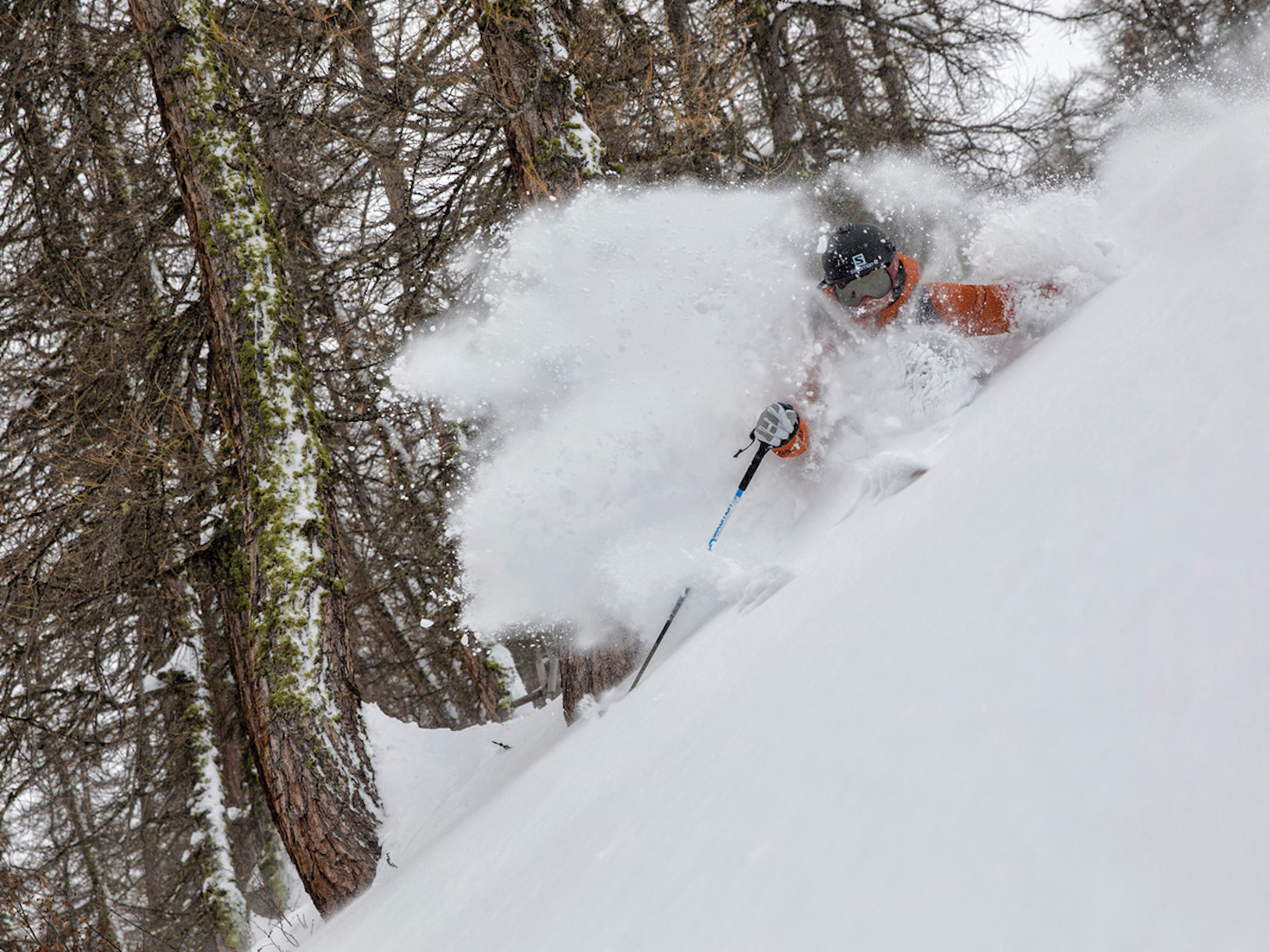
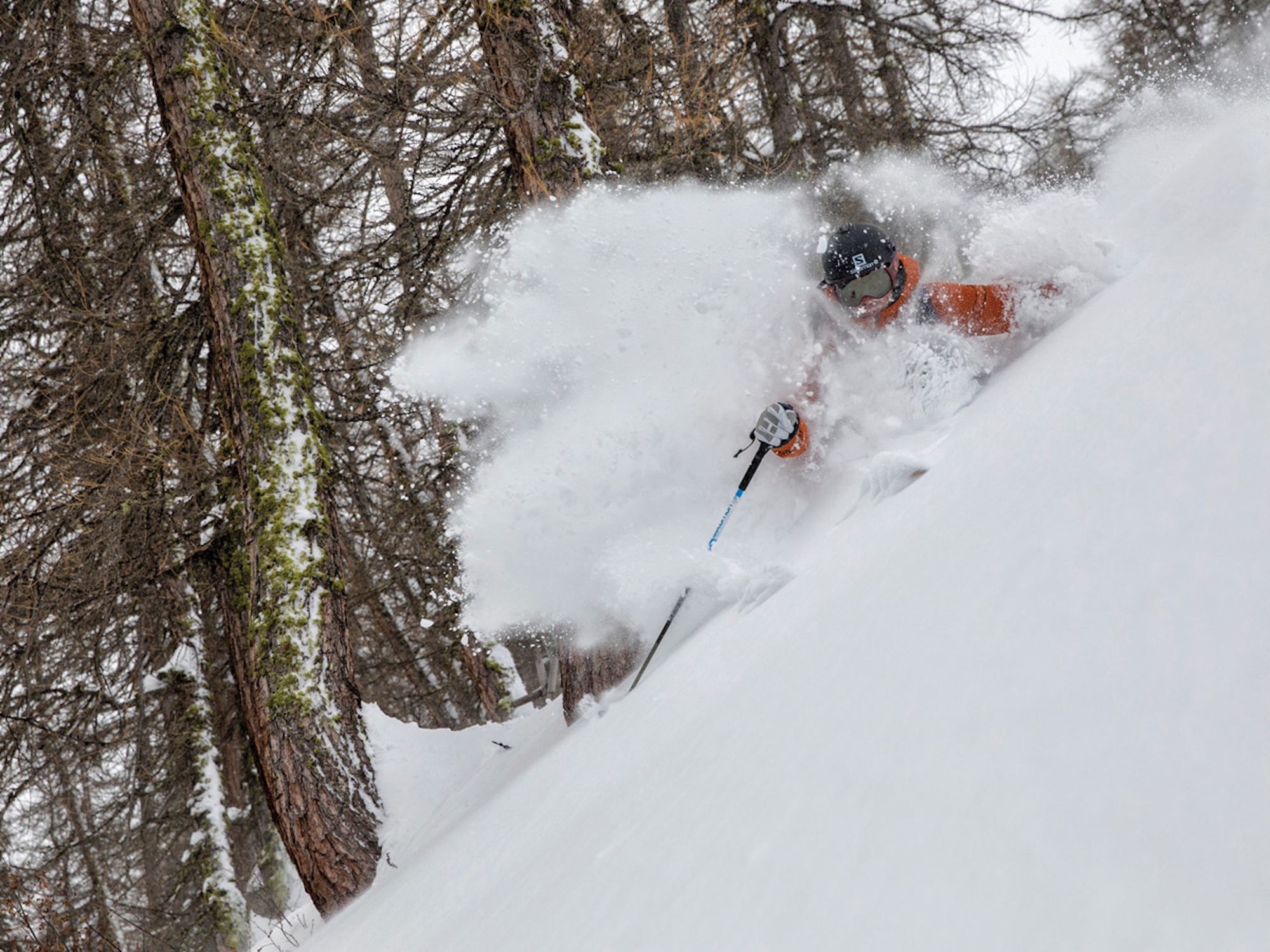
SKIER: Mike Douglas | PHOTO: Christoffer Sjöström | LOCATION: Val D’Isère, FRA
“The problem is when a sport hits a certain point where there are so many rules, and you can’t be creative because the rules don’t allow for it—that’s kind of what happens when sports get into the Olympics—there isn’t much room for that punk progression in there,” Douglas explains, touching on the new wave attitude that he, Auclair and the rest brought to skiing.
Now, the advent of national freeskiing teams and the introduction of slopestyle, halfpipe and big air events in the Olympics, as well as the ever-rising standard of athletes seeking to qualify for the X Games, Dew Tour and World Cups, puts even bigger pressure on park and pipe athletes. Competition-oriented skiers today have to be laser-focused, and for many, this physical and mental strain of training, competing, traveling and repeating the habit, is tiresome.
“There is a whole new mentality out there, and in order to be a competitive park skier, you have to ski park all the time,” says Mark Abma, who began his career skiing park nearly 20 years ago and now spends the vast majority of his time in the backcountry.
“That locks in a certain group of kids from each country, but there is a group who are equally talented park skiers that are going to be looking into different avenues,” he continues, alluding to his own skiing trajectory. “To make it as a [competitive] park skier, it’s really hard to stand out, but in the backcountry, you can really differentiate yourself because there is so much more room for creativity.”


Douglas, who qualified for the Canadian Olympic Mogul Team in 1994 as an alternate, says that, for many, undesirable competition results combined with a reevaluation of what’s important to them as individual skiers can cause them to move their skiing in a new direction.
“I know what that cycle feels like when you’re focused on the Olympics and how consuming it is. When an athlete is not successful it’s a bit like, ‘Man, do I really want to put myself through that again?’ Olympic athletes see those images of the backcountry, too, and [of] the powder and the beautiful peaks, it’s enticing.”
There is a veritable playground in the mountains, and after committing so much energy to landing tricks on a predetermined selection of features, the variety of terrain combined with some of that previously untapped imagination can be just the creative outlet many park and pipe riders are seeking.
“There is a certain freedom that comes with getting into the backcountry, and depending on whether your objective is to go out and ski a big technical face, get really playful on some features, or [ski] pillows, or [do] tree taps… There is this whole world of opportunity out there that you just don’t quite get in the park,” says veteran professional skier Pep Fujas.
While regimented competition may leave athletes unfulfilled mentally, the physical beat-down factor also comes into play. Blown out joints, multiple surgeries and creaky backs become the norm, and the human body can only put up with those kinds of high impacts for so long.
“I had a really bad time with my left shoulder, and had two surgeries when I was still trying to compete in the park,” says Level 1 and MSP film star Tanner Rainville. “It was a really tough thing for me to get over it mentally and physically. It got to the point where I said to myself ‘I just don’t want to eat crap on these hard ass landings anymore,’ and the backcountry is just a bit more forgiving when you fall.”
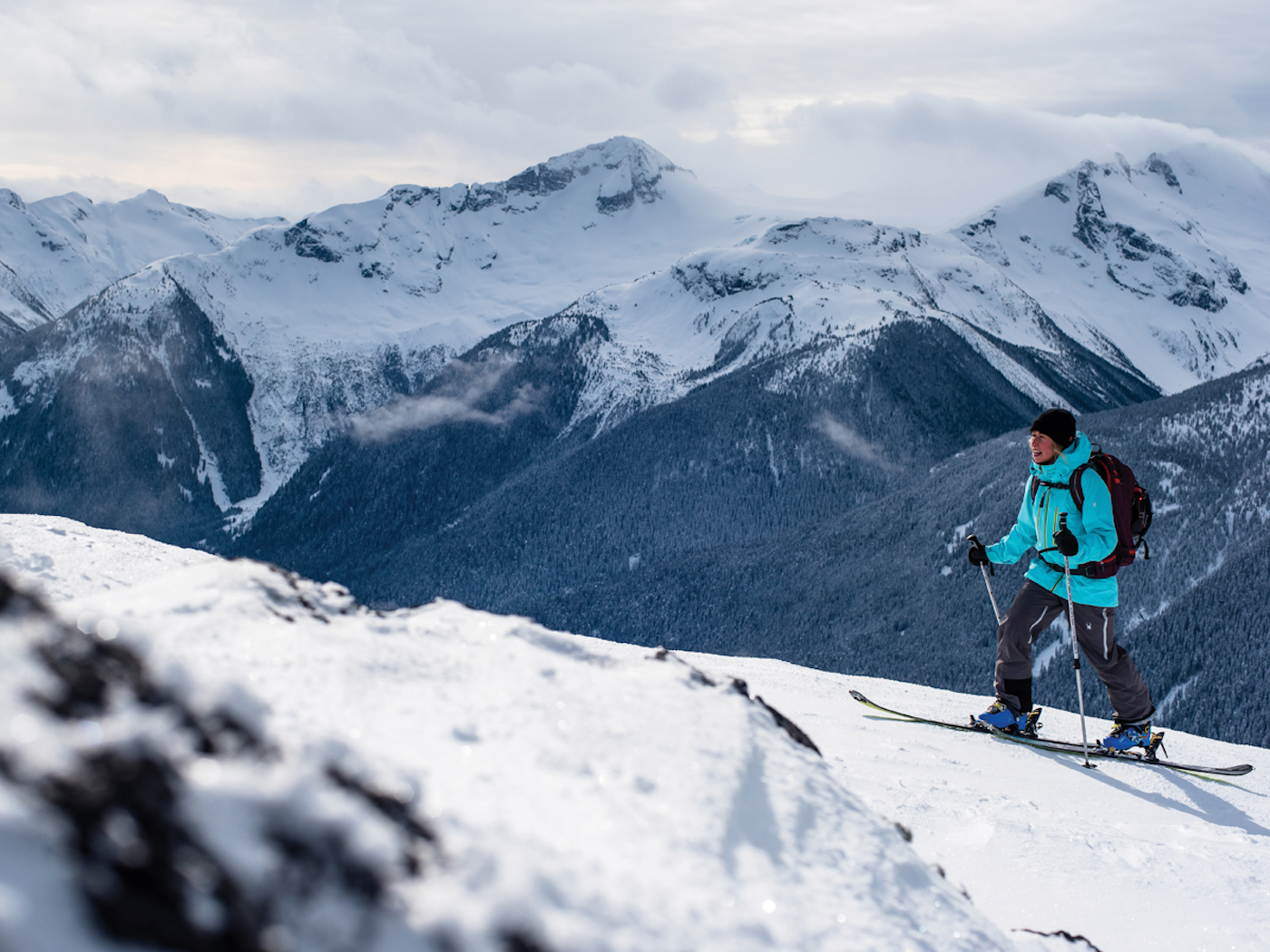
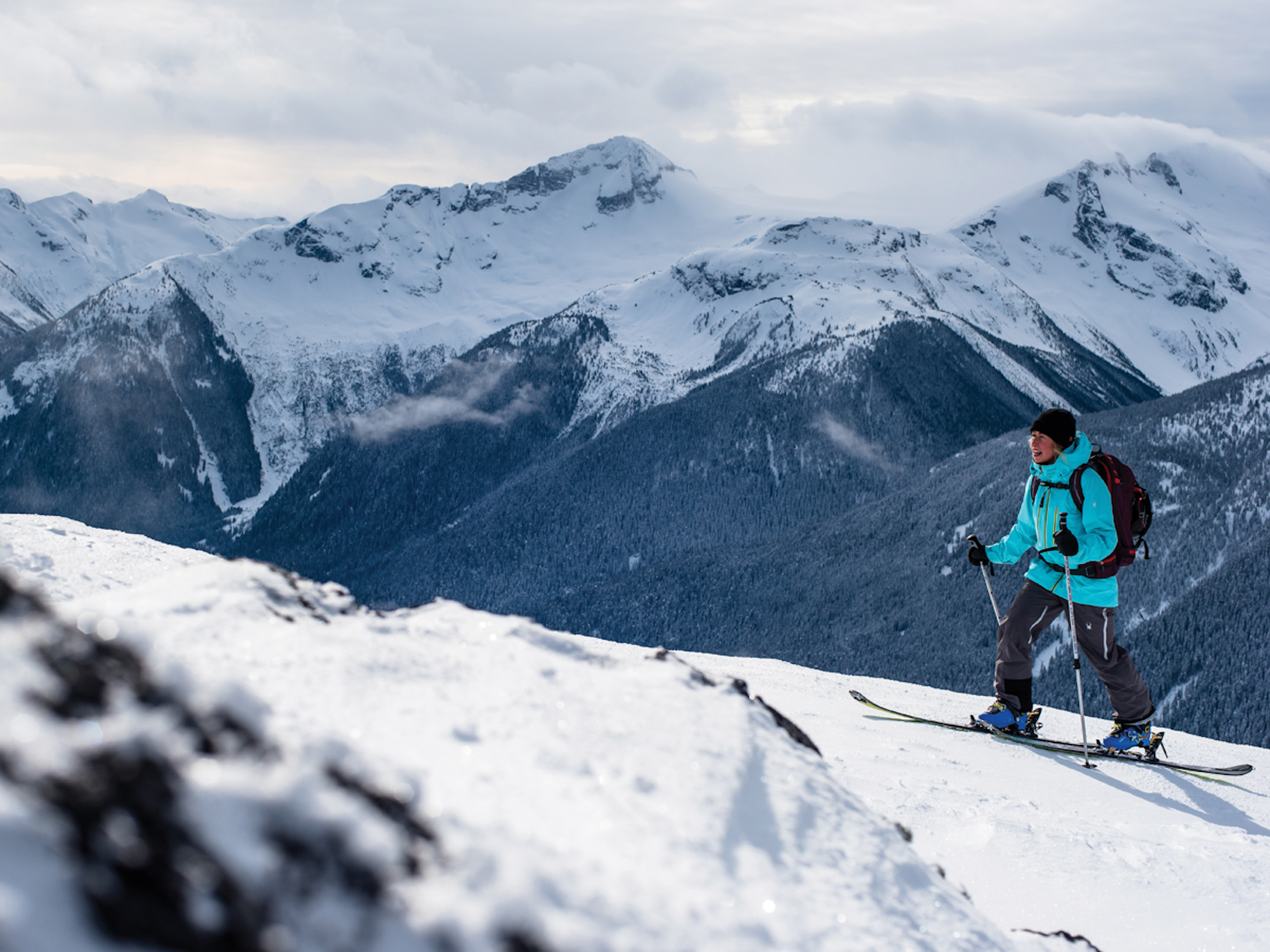
SKIER: Anna Segal | PHOTO: Rueben Krabbe | LOCATION: Whistler, BC
Segal also found herself in pain at the end of her competitive career, having pushed her body to the ragged edge.
“I couldn’t ski as much because my knees just couldn’t hold up. That was really frustrating because I had to be really selective as to how much I skied in the park and how much I trained,” she says. “I had to evaluate how much longer my body could take the pounding of icy landings—even if I don’t crash. It can’t go on forever.”
While these athletes and many of their peers have put the courses and judging booths in the rearview mirror, they still take park laps at varying intervals; Abma spends time in the park a few times annually to keep his tricks sharp for backcountry filming, while Carlson just returned from a two-year hiatus from skiing manicured jump lines and rails.
“I just rode the park for the first time in two seasons this summer [at Mt. Hood]. Now that I’ve spent a bit of time away, it’s super enjoyable when I do take park laps,” Carlson muses. “It makes me laugh how focused I was on shredding the park when I was [competing], I would just think about certain tricks and when I wanted to dial something, I would go over it a million times in my head to make sure I knew I had it. Going back and doing tricks that I hadn’t done in a couple of years, purely off muscle memory, was really fun.”
The cycle of competition-focused athletes venturing off-piste in search of new challenges and inspiration won’t ever run dry, and it’s compelling to examine, specifically, why this is such a recurring trend in freestyle skiing. From pioneers like Douglas and Auclair, who went from being top-level mogul skiers to riding rebelliously, throwing tricks in the “snowboard park,” and eventually into the backcountry. For today’s athletes, like Segal, Carlson and others, there seems to be a universal craving to keep skiing interesting. For many, taking turns freely, following the curves of the natural world, using the preexisting features of these wild, mountainous landscapes as new diving boards, provides this revitalizing experience. Yet, as freestyle riding is so deeply rooted in the culture of terrain park and halfpipe skiing, it never seems to be too long until each of these athletes return to their old stomping grounds.

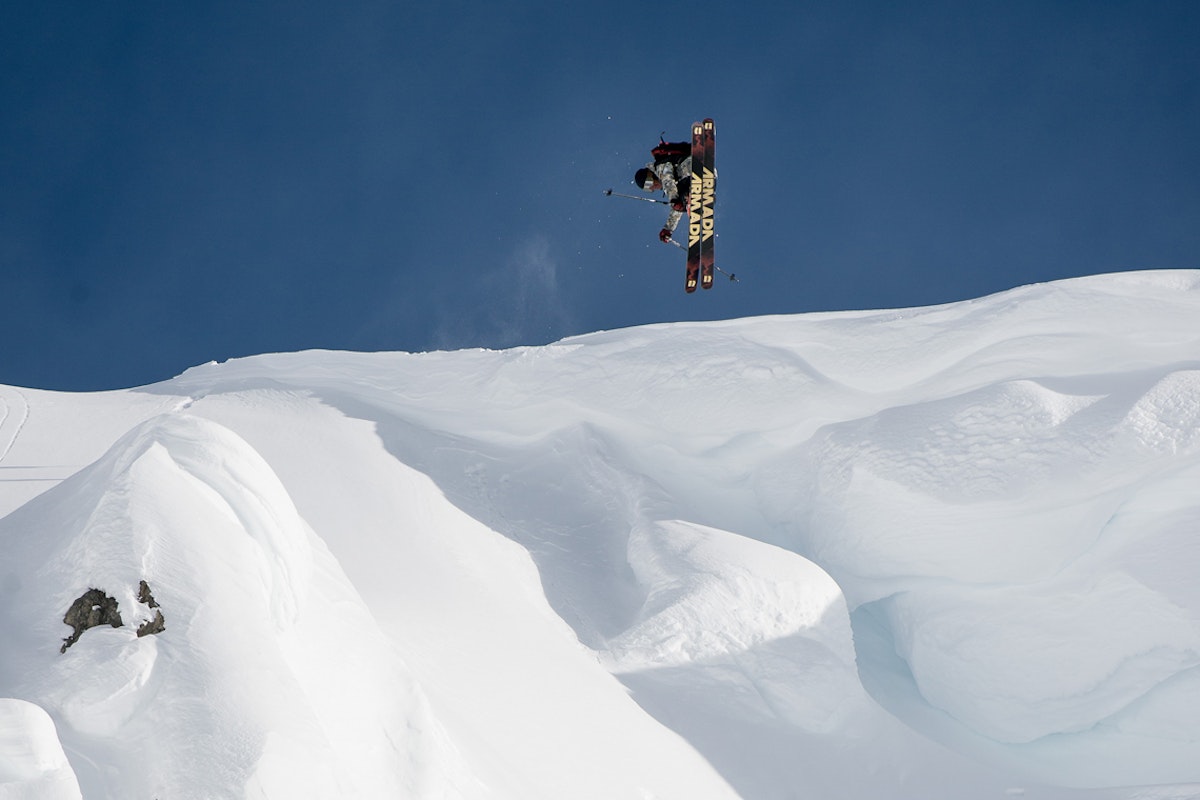
![[GIVEAWAY] Win a Legendary Ski Trip with Icelantic's Road to the Rocks](https://www.datocms-assets.com/163516/1765233064-r2r26_freeskier_leaderboard1.jpg?w=200&h=200&fit=crop)
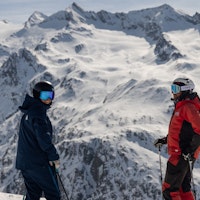
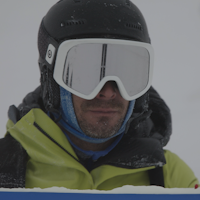
![[GIVEAWAY] Win a YoColorado X Coors Banquet Prize Package](https://www.datocms-assets.com/163516/1764877349-long-live-local-cooler-bag2.jpeg?w=200&h=200&fit=crop)
![[GIVEAWAY] Win a Legendary Ski Trip with Icelantic's Road to the Rocks](https://www.datocms-assets.com/163516/1765233064-r2r26_freeskier_leaderboard1.jpg?auto=format&w=400&h=300&fit=crop&crop=faces,entropy)

